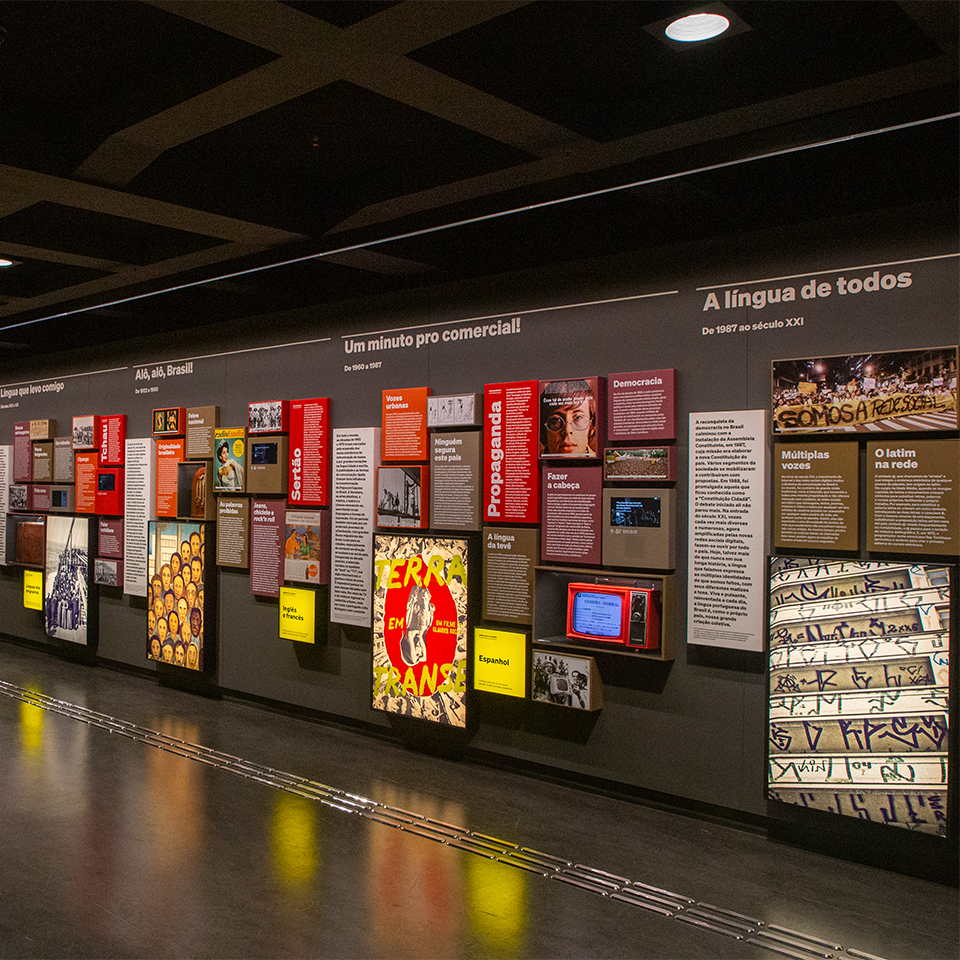
General article


Published in Edition 16
The Museum of the Portuguese Language (Museu da Língua Portuguesa) re-opened on the 31st of July 2021 in the heart of São Paulo, Brazil’s main metropolis. For this new phase of its existence, the museum, which has already welcomed over four million visitors, is placing more emphasis on the relationship between the countries that form the wider Portuguese-speaking community, through experiences such as the latest Nós da Língua (Ties of the Language).
The Nós da Língua experience is a digital encyclopaedia of sorts. Visitors can for example interactively discover the history, music, and literature of Mozambique, Angola, and Portugal. As a quote from José Saramago featured during the exhibit surmises: “There isn't one Portuguese language, there are languages in Portuguese. The Portuguese language is a body scattered all over the world.”
The museum also highlights the diversity of Portuguese spoken across Brazil through a permanent exhibition supported by a range of temporary exhibitions, meet-ups, and guided tours organized by the Education Team for schools and several other groups.
One such display is Falares (Speeches), which includes statements by people from all walks of life and regions in the country on how they participate in society through language. The comments are presented using life-sized totems.
Other, pre-existing installations have been redesigned to embrace new technology and provide interactive opportunities. These inlcude Português do Brasil (Brazilian Portuguese), which tells the story of the language beginning with the Roman Empire, travelling through colonization and contact with other cultural frameworks through to the present day, and how it has evolved for example through the way we connect with social networks. The installation Palavras Cruzadas (Crosswords), also guides us through the origin and meaning of dozens of words in the vocabulary that originated in other languages.
"“Our goal is to show how the Portuguese we speak today is the result of influences from many other languages, especially indigenous ones, the languages of Africans who were enslaved and brought to Brazil, and those of the immigrants who came in the 20th century, producing a language that constantly mutates,” claims Renata Motta, executive director of the Museu da Língua Portuguesa.
Temporary exhibits held since the re-opening, include Língua Solta (Loose Tongue, July-October 2021), Sonhei em português! (I Dreamed in Portuguese, November 2021-June 2022), and Nhe’ Porã: Memória e Transformação (Memory and Change, currently on), and have and continue to put a magnifying lens on topics broached by the permanent exhibit.
“If Língua Solta already blurred the lines between folk and contemporary art using works by renowned artists and common household items, Sonhei em português! shone a light on the way immigrants still play a vital role in the ongoing metamorphosis of Portuguese. As to Nhe’ Porã, it makes it plain that Brazil, contrary to expectations, is a multi-lingual country. Native peoples speak over 175 languages,” offers Marília Bonas, technical director of the Museum.